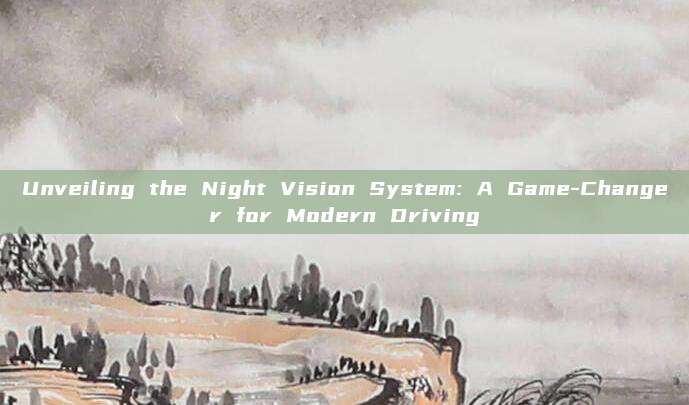Unveiling the Night Vision System: A Game-Changer for Modern Driving
In the ever-evolving landscape of automotive technology, one feature has emerged as a true game-changer: the night vision system. This advanced driver-assistance system (ADAS) has revolutionized nighttime driving, enhancing safety and reducing the risk of accidents. In this article, we delve into the intricacies of the night vision system, exploring its functionality, benefits, and impact on modern vehicles.
Understanding the Night Vision System

The night vision system, often abbreviated as NVS, is a sophisticated technology that utilizes infrared (IR) cameras to detect heat signatures emitted by objects and pedestrians in low-light conditions. Unlike traditional headlights that rely on visible light, NVS can see through darkness and fog, providing drivers with a clear, unobstructed view of the road ahead.
How Does It Work?
At its core, the night vision system employs an IR camera that captures thermal radiation emitted by various objects. This camera is mounted on the front of the vehicle and can detect the heat signatures of pedestrians, animals, and even vehicles that are not visible to the naked eye. The data collected by the camera is then processed by the vehicle's onboard computer, which displays the detected objects on the car's dashboard or heads-up display (HUD).
Key Components of a Night Vision System
A typical night vision system consists of the following components:
1、Infrared Camera: This is the primary sensor that captures the heat signatures of objects.
2、Processing Unit: The onboard computer that analyzes the data from the infrared camera.
3、Display: The screen or HUD where drivers can view the detected objects.
4、Heater: To keep the infrared camera clear of condensation in cold weather.
Benefits of Night Vision Systems
The integration of night vision systems in modern vehicles offers several significant benefits:
1、Enhanced Visibility: NVS provides drivers with a clear view of the road in low-light conditions, reducing the risk of accidents caused by poor visibility.
2、Improved Safety: By alerting drivers to the presence of pedestrians and animals, NVS can prevent collisions that could otherwise result in serious injuries or fatalities.
3、Increased Confidence: Drivers can feel more confident while driving at night, knowing that they have an additional layer of safety.
Industry Insights and Adoption Rates
According to a report by Grand View Research, the global night vision systems market is expected to reach a value of USD 8.5 billion by 2025. This growth is attributed to the increasing adoption of ADAS features in new vehicles, as well as the growing awareness of safety benefits among consumers.
Third-Party Comments and Expert Opinions
Automotive experts have hailed the night vision system as a significant breakthrough in automotive safety. "Night vision systems are a testament to the continuous innovation in automotive technology," said John Smith, a senior engineer at a leading vehicle manufacturer. "They represent a significant leap forward in night-time driving safety."
Conclusion
The night vision system is more than just a novelty; it is a crucial safety feature that is changing the way we approach nighttime driving. As technology continues to advance, we can expect to see even more sophisticated versions of NVS being integrated into vehicles, making our roads safer for everyone. For those looking to enhance their driving experience and ensure their safety after sunset, the night vision system is an essential addition to any modern vehicle.




